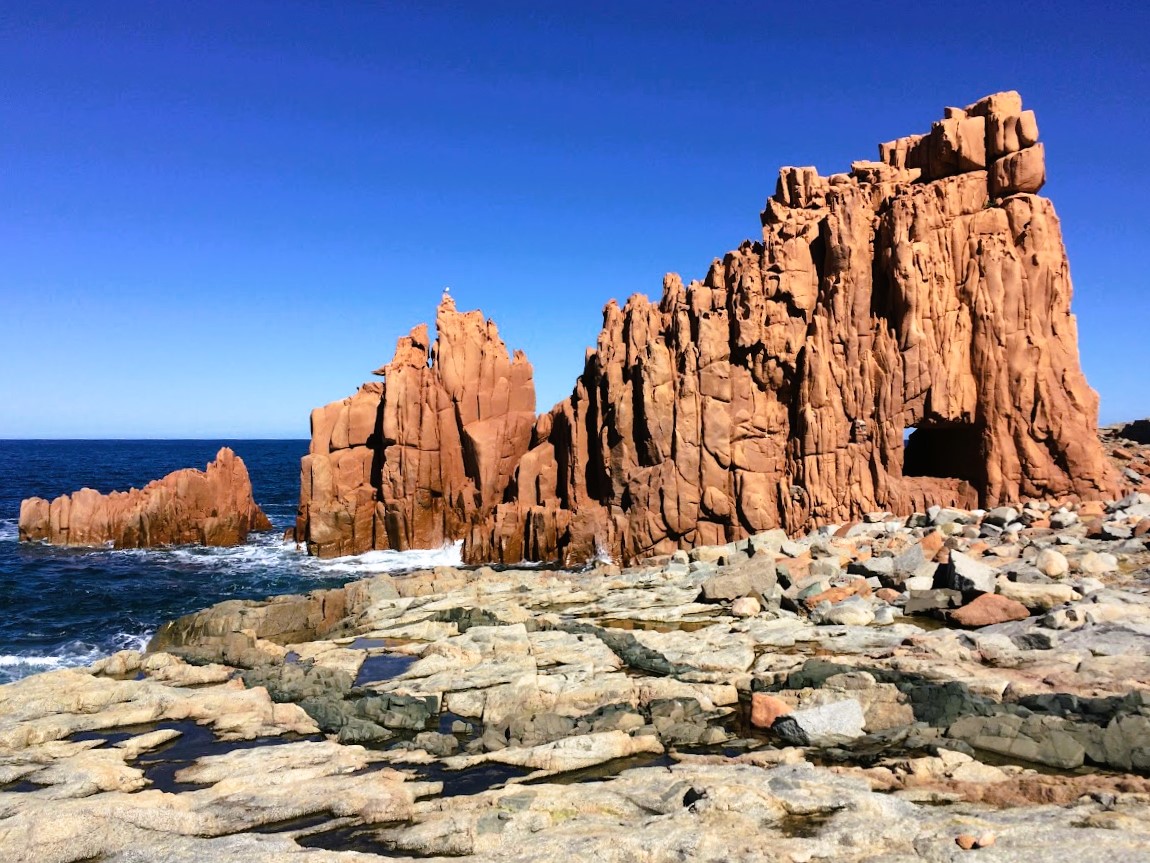
Tortolì
Tortoli is the gateway to Ogliastra and the main center of the central-eastern coast of Sardinia, known for the beautiful beaches, the diversity of its environment, traditions, agri-food and fish products. Around the town, which has a population of eleven thousand and is enriched by tens of thousands of visitors in summer, you will find tropical beaches, forests and Mediterranean scrub, fertile plains and ponds, gentle cultivated hills and a rare strip of red porphyry that runs parallel to the coast. Its most notable example is the red rocks; the natural monument of the village of Arbatax emerges from the emerald green waters and offers a suggestive chromatic contrast. It is also the venue of the Rocce Rosse Blues music festival. Next to it is the port, a final destination for tourists and a place where they can embark to discover the wonderful bays of Ogliastra. The sea of Tortolì is charming, this coast of the island is awarded with the largest number of “blue flags”. Behind Rocce Rosse stands out Cala Moresca, an “urban” pearl with granite rocks and golden sand. A little further south, the blue shades of Porto Frailis and the long Lido di Orrì: sixteen kilometers of hidden coves and small beaches, including the wonderful Cala Ginepro with its fine sand, smooth pebbles and juniper grove, and San Gemiliano. Red rocks also emerge in the paradise of Cea, with four kilometers of soft white sand. The natural spectacle is completed by pleasant green areas: La Sughereta city park and Batteria park on top of the hill overlooking the entire bay. The Nuragic era left more than 200 monuments in the area, an example is the site of s’Ortali ‘e su Monti; its seven hectares include a complex nuraghe, a tomb of the giants, two menhirs, a hut, the Domus de Janas, a wall and the remains of another nuraghe. With the arrival of the Phoenicians (7th century BC) and the Punics in the area, Sulci Tirrenica was created, a strategic port for ancient seafarers. Punic traces are found in the pond of Tortolì, while the remains of Roman rule are shipwrecks in the depths of the gulf. Spanish heritage are the control towers, including the San Miguel Tower. The city’s monuments include the Museum of Modern Art on the Log de s’Iscultura and the former Cathedral of Sant’Andrea, built at the end of the 18th century in classicist style on an older church of which two chapels remain; in one, a simulacrum of Saint Elizabeth of Hungary was found. Inside is a sumptuous altar made of polychrome marble. The most popular festival in the city is Stella Maris at the end of July in the Arbatax church with a parade by the sea. In the restaurants you can taste culurgiones, specially closed ravioli, soups, roast pork and lamb and boiled mutton. All this accompanied by a glass of cannonau, which is a must for a true Ogliastra experience.






